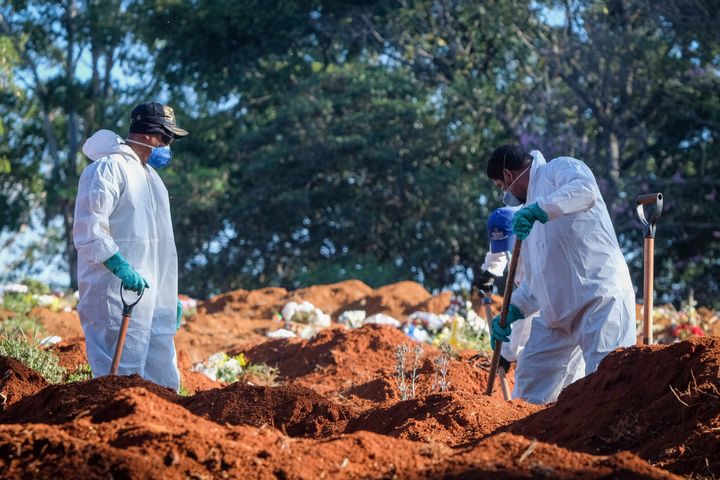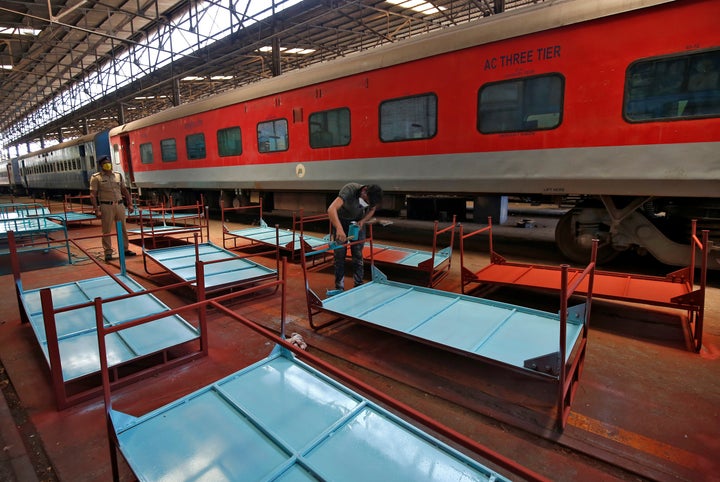While coronavirus infection rates across much of Europe and parts of the United States have begun to fall, allowing people to return to some semblance of normal life, the pandemic is continuing to accelerate in other regions of the world.
“Although the situation in Europe is improving, globally it is worsening,” World Health Organisation director-general Tedros Adhanom Ghebreyesus said earlier this month.
The situation is particularly dire in Latin America, which has become the new epicentre of the pandemic, and where scientists say the peak of infections is still weeks away.
Nations that have managed to control the spread of the virus may have started to worry about a second wave as they loosen lockdown restrictions. But in Latin America, the WHO has made it clear that the first phase of the pandemic is still going strong.
The situation in Brazil is especially concerning, Pan American Health Organisation director Carissa Etienne said last week. The country has been one of the hardest-hit nations in the world, with nearly a million confirmed cases of coronavirus and nearly 50,000 deaths, according to researchers at Johns Hopkins University, second only to the United States.
As Latin America’s largest country, Brazil accounts for about a quarter of the four million coronavirus cases in the region, and about a quarter of the deaths — and the rate of infection is increasing.
A recent analysis by the Covid-19 Brazil group – an initiative bringing together scientists from Brazilian universities and research centres – and Johns Hopkins University found Brazil has the highest growth rate of confirmed cases in the world.
“We are the only country in the world where the number of cases and deaths is accelerating,” Domingos Alves, a member of the Covid-19 Brazil group, told HuffPost Brazil.
“Brazil is the only one that is putting its foot on the accelerator.”

In São Paulo, Brazil’s largest metropolis, authorities recently announced plans to dig up cemeteries and store the remains in large metal containers in order to make room for new coronavirus victims.
Obtaining an accurate picture of the situation in Brazil has been challenging, however, due to the widespread underreporting of cases. The testing rate in the United States, for example, has been 37,188 tests per million inhabitants. In Brazil, the rate has been just 8,737 per million inhabitants.
Moreover, the Brazilian government has been accused of trying to mask the deadly impact of the pandemic after the health ministry removed months of data from a website that had been tracking Covid-19 earlier this month.
Brazilian president Jair Bolsonaro has long played down the dangers of the pandemic, replaced medical experts in the health ministry with military officials, and argued against state lockdowns to fight the virus, hobbling the country’s public health response.
Meanwhile other countries have moved to lift lockdown restrictions even as the number of coronavirus cases continues to rise.
“We have to head toward the new normality, because the national economy and the well being of the people depends on it,” Mexican president Andrés Manuel López Obrador said earlier this month.
On Thursday, Mexico’s health ministry reported a record 5,662 new confirmed cases of coronavirus infections and 667 additional fatalities, bringing the country’s total to 165,455 cases and 19,747 deaths. The government has said the real number of infected people is likely significantly higher than the confirmed cases.
India, too, is continuing to loosen lockdown measures across the country, despite an escalating number of cases.
On Thursday, the Indian health ministry reported a record spike in the number of coronavirus cases, bringing the total to nearly 400,000.

In New Delhi, hospitals have been running out of beds, and some patients have been turned away for lack of space.
“On June 1, we downloaded the report which said that our father-in-law was Covid positive. That’s when our ordeal began,” Mandeep Singh wrote in HuffPost India.
“Though they had promised, Ganga Ram Hospital did not contact us. When we tried calling them to figure what we should do next, no one answered those calls.
“Frustrated, we started reaching out to the other hospitals we knew were admitting Covid patients. We called Max, Apollo, AIIMS, Safdurjung — all the hospitals directed us not to come as they did not have beds.”
Patients have been left unattended in corridors of government-run hospitals. Local media reports of dead bodies in a hospital lobby prompted the Supreme Court to order the state administration to get its act together.
On Sunday, the federal government said it will provide New Delhi’s city authorities with 500 railway coaches that will be equipped to care for coronavirus patients, in order to address the shortage of hospital beds.
A study released this week suggested that the peak of the outbreak could come in November, and that India was likely to experience a shortage of ventilators and ICU beds.
“I don’t think we expected that cases would rise this much,” a lawmaker of the Aam Aadmi party that runs the capital told Reuters. “We were so over-confident.”
With reporting from HuffPost Brazil, HuffPost India and Reuters.

